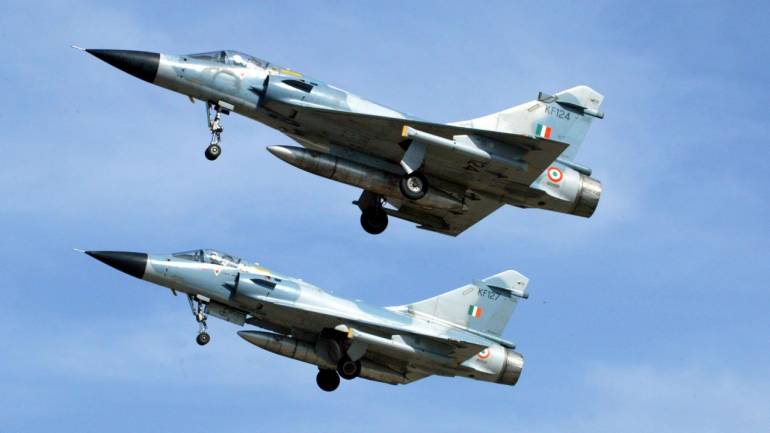Operation ‘Bandar’ was IAF’s first strike inside Pakistan since the 1971 war
A Squadron Leader of the Indian Air Force (IAF), who was one of the pilots tasked with striking the Jaish-e-Mohammad (JeM) training facility near Balakot, Pakistan in February, told NDTV that they did not miss their target.
The operation, titled ‘Bandar’, was IAF’s first strike inside Pakistan since the 1971 Indo-Pak war. The 'pre-emptive' airstrikes were conducted 12 days after the terror outfit claimed responsibility for a suicide attack on a Central Reserve Police Force (CRPF) convoy in Kashmir, martyred at least 40 soldiers.
In the run-up to the mission, the team 'smoked a lot of cigarettes' and "kept pacing up and down once we knew what our mission was," the Squadron Leader said.
"The entire operation took approximately two-and-a-half hours," another Squadron Leader told the news channel.
The two pilots launched Israeli-made Spice 2000 satellite-guided bombs at the target.
Moneycontrol could not independently verify the report.
IAF had deployed 12 Mirage 2000 fighter jets for the attack. The plan was to hit the Balakot terrorist facility with two separate types of munitions -- Spice 2000 and the Crystal Maze.
While the Spice 2000 air-droppable bomb is designed to penetrate structures before exploding, Crystal Maze is equipped to send a live video feed of the target as it is being struck.
However, a low cloud cover on the night of the attack prevented the IAF from launching Crystal Maze. The fighters did launch five of the six Spice 2000s they were armed with, in total.
"I have no doubt that the Spice 2000 hit their target," the second Mirage pilot said.
There was a controversy over the effectiveness of the airstrikes after satellite imagery released by DigitalGlobe showed all structures at the JeM camp standing. "The resolution of the satellite imagery, which was shown, is nowhere close to what is needed to accurately show the ingress points of the weapon," one of the pilots said. "The Spice 2000 is not a weapon that misses. There may have been efforts at concealing the damage caused on the roofs of the buildings."
When asked if the two-hour operation was the longest of his career, one of the pilots told NDTV, "It went by in a flash because there was so much to do."
According to the report, while the two pilots did not pick up a Pakistani interceptor jet on their radars, they were alerted about the presence of at least one such jet flying towards the Indian formation by IAF’s Airborne Warning and Control System (AWACS) aircraft. AWACS was deployed in the Indian airspace to coordinate the operation.
However, by then, the Indian jets had fired at the targets and moved out. "The Spice 2000 is a fire and forget weapon. You don't need to loiter in the area while it flies towards its target," a pilot said.
One of the pilots said he flew about eight km across the Line of Control (LoC) to be able to fire at the target.
‘IAF achieved military objective’Air Marshal BS Dhanoa on June 24 said the IAF 'achieved its military objective' in the operation while Pakistan did not. The Pakistani Air Force (PAF) did not enter into Indian airspace after the Balakot airstrike, he stated."They didn't come into our airspace. And what was our objective? Our objective was to strike the (terror) camp and we have done that. We have achieved our objective. Their (Pakistani) objective was to hit our army places. They could not and that is the bottom line," Dhanoa said.Subscribe to Moneycontrol Pro and gain access to curated markets data, exclusive trading recommendations, independent equity analysis, actionable investment ideas, nuanced takes on macro, corporate and policy actions, practical insights from market gurus and much more.

















